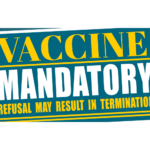Offences by Nationality

The media often depicts people from a Middle Eastern, Asian or African background as being major perpetrators of crime, in particular focusing on organised crime gangs such as the bikies and car rebirthing rings.
But is criminal activity in Australia actually split according to race or ethnic background?
What the statistics say
Although the Bureau of Crime Statistics and Research (BOCSAR) currently doesn’t collect information on the ethnic background of offenders, Australian Bureau of Statistics custody figures for 2012 demonstrate the proportion of different ethnic groups that were serving custodial sentences in that year.
As at June 2012, 80% of prisoners in Australian prisons were born in Australia, although there is no breakdown of their ethnic origins.
Aboriginal and Torres Strait Islanders made up just over a quarter of prisoners in Australia, while 3% were born in New Zealand, 3% in Vietnam, and 2% in the United Kingdom.
In NSW and Victoria, the number of prisoners born overseas was slightly higher than the national average of 20%.
Tasmania and the NT had the lowest percentage of prisoners born overseas.
Rates of imprisonment
The highest imprisonment rates for people born outside Australia were for those born in Nigeria (1,014 prisoners per 100,000 population born in Nigeria).
This was followed by those born in Indonesia, with 513 prisoners per 100,000 of the adult population.
The link between immigration and crime
Although the vast majority of prisoners in custody were born in Australia, the media has perpetuated the idea of a link between immigrants and crime for many years.
In 2012, concerns were raised by the media in Victoria that there were increasing crime rates among the migrant community in Melbourne, particularly the Somalian community.
Refugee groups responded by saying that any such link would likely be a result of social isolation, difficulty finding work, and education issues.
A paper was produced by Victoria University in 2006 on the links between crime and ethnicity.
An analysis was undertaken of the crime rates within certain selected local government areas in Victoria and the birthplace and cultural identity of the offenders.
It excluded those of Aboriginal and Torres Strait Islander descent.
The findings indicated that those born outside of Australia were slightly more likely to commit property and drug offences in the selected communities than those who were Australian-born.
The study also found that the rate of crime for those born outside Australia but who had Australian citizenship was lower than the more recent arrivals, who didn’t have citizenship.
Rates were also slightly higher for immigrants who originated from non-English speaking countries than those who came from the UK or North America, leading to speculation that difficulty adjusting and language issues could be a significant contributor to a higher rate of crimes committed by recent immigrants in that particular area.
Other suggestions were made in the report which could explain the findings, including that new arrivals to Australia generally started off in already disadvantaged areas which might have a higher crime rate.
It was also suggested that the crime rate among newer immigrants were partly reflective of their young age, and that as they got older their level of criminal activity would reduce.
This suggestion is consistent with statistics indicating that younger people in Australia have a greater tendency to commit crimes, so this could just be a reflection on general trends in society rather than anything to do with ethnicity.
Organised crime
Organised crime has been in the media lately with state governments implementing legislation to crack down on organised crime in general, and bikie gangs in particular.
According to a Crime Commission report on outlaw motorcycle gangs, where they were once overwhelmingly Caucasian, they now increasingly include people from non-Caucasian backgrounds.
Organised crime has been considered a problem in Australia for many years.
Fifteen years ago, Asian crime gangs were the most feared, but the trend switched to Middle Eastern and Lebanese gangs being targeted as a problem.
It is interesting that, although bikie gangs are an increasing focus of government legislation, they are not labelled by their predominantly Caucasian nationality but rather by the fact that they ride motorcycles.
Accuracy is difficult
According to BOCSAR, it is difficult to get accurate statistics on the ethnic background of offenders as many refuse to provide the information, and attempts to collect information previously have led to reporting inaccuracies.
Providing inaccurate information about the rate of crime carried out by different nationalities could also lead to certain groups being unfairly targeted and marginalised.
This has been an issue since the 9/11 attacks in the US, and the idea of certain nationalities being more prone to criminal and even terrorist behaviour is as strong as ever.
It continues with the recent activities associated with the unrest in Syria and Iraq, and often results in innocent individuals and groups being treated with suspicion or even arrested by police without any reasonable evidence.
This is despite the fact that the most victimised people in those countries are Islamic themselves.
At the end of the day, media-fuelled hysteria about the perceived link between crime and ethnicity can be unfair and dangerous, and we should all think very carefully before discriminating against people on the basis of their ethnic or racial origin.






